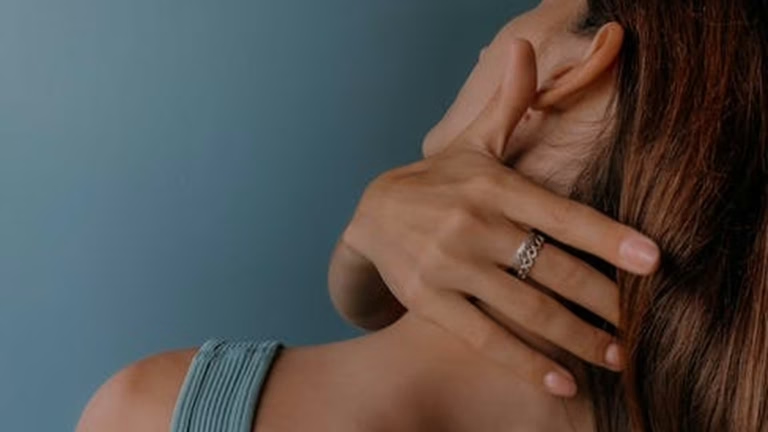Sleep Apnea Awareness: Symptoms, Diagnosis, and Treatment Options
Understanding Sleep Apnea
Sleep apnea is a common yet serious sleep disorder where breathing repeatedly stops and starts during sleep. These pauses in breathing can last for a few seconds to minutes and can occur many times an hour. This disruption prevents the body from getting enough oxygen, leading to various health problems. Increasing sleep apnea awareness is crucial because many people are unaware they have it, and left untreated, it can significantly impact their quality of life and overall health.
Types of Sleep Apnea
There are three main types of sleep apnea:
- Obstructive Sleep Apnea (OSA): The most common type, caused by a blockage of the airway, usually when the soft tissue in the back of the throat collapses during sleep.
- Central Sleep Apnea (CSA): Occurs when the brain doesn’t send proper signals to the muscles that control breathing.
- Mixed Sleep Apnea: A combination of both obstructive and central sleep apnea.
Recognizing the Symptoms
Recognizing the symptoms of sleep apnea is the first step towards diagnosis and treatment. While some symptoms are more obvious, others can be subtle and easily overlooked.
Common Symptoms
- Loud Snoring: Often reported by a bed partner. It’s important to note that not everyone who snores has sleep apnea, but it’s a common indicator.
- Daytime Sleepiness: Feeling excessively tired during the day, even after a full night’s sleep. This can manifest as difficulty concentrating, irritability, or falling asleep during activities like driving or watching TV.
- Observed Episodes of Stopped Breathing During Sleep: A bed partner may witness you stopping breathing during sleep.
- Gasping or Choking During Sleep: Waking up suddenly with a gasping or choking sensation.
- Morning Headaches: Often caused by low oxygen levels during the night.
- Dry Mouth or Sore Throat: Waking up with a dry mouth or sore throat.
- Difficulty Concentrating: Impaired cognitive function due to sleep deprivation.
- Irritability or Mood Changes: Sleep deprivation can negatively impact mood.
- High Blood Pressure: Sleep apnea is often associated with high blood pressure.
- Nighttime Sweating: Excessive sweating during sleep.
- Decreased Libido: Can be affected by sleep apnea.
Diagnosis: Confirming Sleep Apnea
If you suspect you might have sleep apnea, it’s crucial to consult with a doctor. They will likely recommend a sleep study to confirm the diagnosis.
Sleep Studies (Polysomnography)
A sleep study, also known as polysomnography, is the most common way to diagnose sleep apnea. It involves monitoring your brain waves, heart rate, breathing patterns, and oxygen levels while you sleep. Sleep studies can be conducted in a sleep lab or, in some cases, at home.
- In-Lab Sleep Study: You’ll spend the night in a sleep lab where technicians will monitor you throughout the night.
- Home Sleep Apnea Test (HSAT): A simpler test you can perform at home, typically involving wearing sensors to monitor your breathing and oxygen levels. HSATs are usually only suitable for diagnosing obstructive sleep apnea.
Treatment Options: Improving Your Sleep and Health
Fortunately, there are several effective treatment options available for sleep apnea. The best treatment approach will depend on the severity of your sleep apnea and your individual circumstances.
Continuous Positive Airway Pressure (CPAP)
CPAP therapy is the most common and often the most effective treatment for obstructive sleep apnea. It involves wearing a mask over your nose and mouth while you sleep. The machine delivers a continuous stream of air that keeps your airway open, preventing pauses in breathing.
Oral Appliances
Oral appliances are custom-fitted mouthpieces that help keep your airway open by repositioning your jaw or tongue. They are often a good option for people with mild to moderate sleep apnea.
Lifestyle Changes
Making certain lifestyle changes can also help improve sleep apnea symptoms, especially in cases of mild sleep apnea.
- Weight Loss: Losing weight can reduce the amount of tissue in the neck that can obstruct the airway.
- Avoid Alcohol and Sedatives: These substances can relax the muscles in the throat, making sleep apnea worse.
- Sleep on Your Side: Sleeping on your back can worsen sleep apnea.
- Quit Smoking: Smoking can irritate and inflame the airways, contributing to sleep apnea.
Surgery
In some cases, surgery may be an option to remove or reshape tissues in the throat or nose to open up the airway. Surgical options are typically considered when other treatments have not been successful.
The Importance of Seeking Help
Sleep apnea is a treatable condition, and seeking help can significantly improve your quality of life. Left untreated, sleep apnea can increase your risk of developing serious health problems, including:
- Heart disease
- Stroke
- High blood pressure
- Type 2 diabetes
- Accidents (due to daytime sleepiness)
If you suspect you may have sleep apnea, don’t hesitate to talk to your doctor. Early diagnosis and treatment can help you get a better night’s sleep and improve your overall health and well-being.
Conclusion
Raising sleep apnea awareness is vital for early detection and treatment. By understanding the symptoms, diagnosis methods, and treatment options, individuals can take proactive steps to improve their sleep and overall health. If you or someone you know exhibits symptoms of sleep apnea, consult a healthcare professional for proper evaluation and guidance. Remember, a good night’s sleep is essential for a healthy and fulfilling life.






